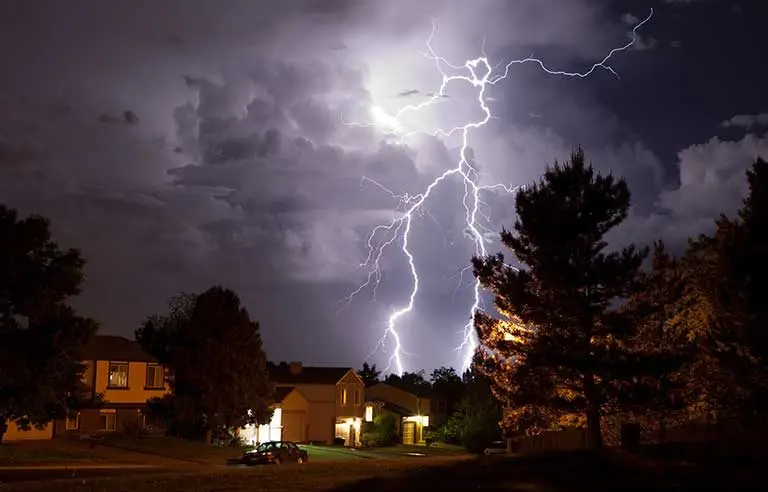
Photo: milehightraveler/gettyimages
The National Weather Service says about 300 people are struck by lightning every year. This leads to approximately 30 deaths and many serious injuries. With guidance from the NWS, the National Lightning Safety Institute and other experts, here are some tips for staying safe from lightning before, during and after storms.
Before the storm:
- Consider postponing or canceling outdoor events or activities if severe weather seems likely. Stay tuned to TV or radio forecasts, or download a mobile app, for alerts about bad weather.
- Make a lightning safety plan that includes where to seek shelter and the best route for getting there.
- At home, consider unplugging electrical items, such as appliances and computers, and turn off air conditioners to avoid damage from a potential power surge.
During the storm:
- Don’t seek protection from lightning in sheds, picnic shelters, tents or covered porches. If you have a vehicle nearby, get inside it and wait out the storm with the windows rolled up.
- If you’re boating or fishing, get to shore as quickly as you can and look for shelter – ideally in a vehicle or substantial building.
- When looking for shelter, avoid high ground, open spaces and trees. If you’re forced to stay outdoors, keep your feet together at all times and crouch.
- Stay away from metal objects such as fences, gates, flag poles, light poles, metal bleachers, golf carts and machinery.
- Keep clear of doors and windows when indoors.
- Don’t shower or bathe until the storm subsides, as plumbing can conduct electricity.
After the storm:
- Stay indoors for at least 30 minutes after the last sound of thunder is heard. Even if the sky looks clear or a rainbow appears, charges of lightning often linger in the clouds.
- If someone has been struck by lightning, you can help. Although the person has likely entered cardiac arrest, they don’t carry an electrical charge and are safe to touch. Call 911 and provide first aid, administering CPR if you’re trained and using an AED if one is available. If possible, move the victim to safety before paramedics arrive.
McCraren Compliance offers many opportunities in safety training to help circumvent accidents. Please take a moment to visit our calendar of classes to see what we can do to help your safety measures from training to consulting.
Original article published by Safety+Health an NSC publication


